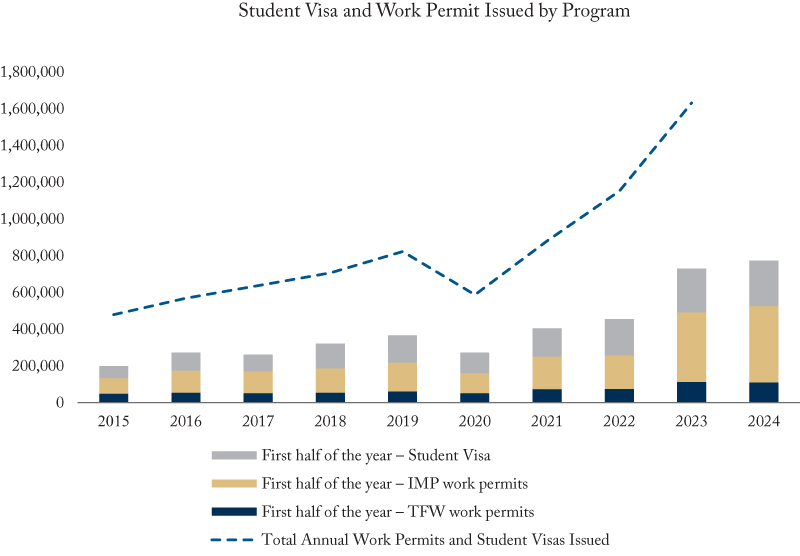From: Parisa Mahboubi
To: Immigration observers
Date: August 23, 2024
Re: Faster, Please, on Fixing the Temporary Foreign Worker Problem
The government has committed to reducing the non-permanent resident population to 5 percent of the overall population within three years, current trends in issuing work permits reveal a troubling disconnect between policy goals and on-the-ground realities.
Despite efforts to curb the influx of temporary foreign workers, the number of permits issued in the first half of 2024 was only marginally lower than last year.
A recent UN report highlighted serious labour abuses within the Temporary Foreign Workers Program (TFWP), including underpayment, wage theft, and physical and emotional mistreatment. These findings underscore the urgency for reform and stronger oversight to protect foreign workers.
In response, the federal government is considering new restrictions and measures targeting the TFWP’s low-wage stream. While some proposals are welcome, they require careful consideration.
The number of permits issued under the TFWP surged from 98,000 in 2019 to about 184,000 in 2023 – an 87-percent increase. Although there was a slight reduction of less than 2 percent in the first half of 2024 compared to the same period last year, this falls short of the government’s objectives. The same trend (See Figure) applies to work permits under the International Mobility Program (IMP) and international student visas, raising concerns about the effectiveness of current policies.

The surge in the low-wage stream of the TFWP has been particularly unsustainable. In the first quarter of 2024, employers received approval to hire nearly 29,000 workers through this stream – a 25-percent increase from the previous year and the highest quarterly figure recorded since 2016.
More concerning, this growth occurred despite the national unemployment rate rising since 2022, reaching 6.1 percent by mid-2024. Employers’ continued reliance on low-wage temporary foreign workers threatens both labour market integrity and the rights of these workers.
The federal government must take decisive action to realign the TFWP with its original intent: A last-resort solution for genuine labour shortages in specific industries and regions. As it currently operates, the low-wage stream not only suppresses wages but also exposes temporary workers to exploitation and abuse.
However, while stricter enforcement is necessary, the government’s approach should avoid blanket exclusions that could harm entire industries or regions. A temporary pause on issuing certain permits does not address the root problem and reflects poorly on the government’s ability to manage the issue.
Recognizing that some regions may face highly localized, sector-specific labour shortages, a more prudent approach would be to restore the TFWP to its pre-pandemic criteria, which were more closely aligned with unemployment rates and regional needs. Before the pandemic, the program better reflected economic conditions, requiring employers to exhaust all options for hiring Canadian workers before resorting to temporary foreign labour.
Looking ahead, the government should consider tying eligibility to local labour market conditions, ensuring that the TFWP fills gaps where Canadian workers are unavailable. Implementing a stricter review process for Labour Market Impact Assessments and excluding employers who abuse the program would be more effective than broad exclusions.
While the government's efforts to control the TFWP’s growth are a step in the right direction, more comprehensive action is needed to reduce the size of the non-permanent resident population as a whole. We must return to the pre-pandemic system that prioritized protection of both Canadian workers and temporary foreign labourers. By doing so, we can safeguard the interests of all workers in Canada and address the growing concerns surrounding this vital yet increasingly problematic program.
Parisa Mahboubi is a senior policy analyst at the C.D. Howe Institute.
To send a comment or leave feedback, email us at blog@cdhowe.org.
The views expressed here are those of the author. The C.D. Howe Institute does not take corporate positions on policy matters.





